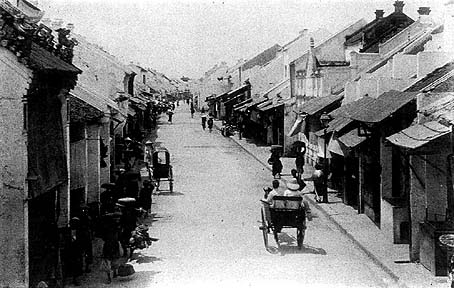- Vietnam Overview
- Main Cities in Vietnam
- Regions in Vietnam
- Other Cities in Vietnam
- Getting to Vietnam
- Getting Around Vietnam
- Language in Vietnam
- Education in Vietnam
- Vietnam Activities
- Vietnam Attractions
- Vietnam Money & Shopping
- Eating and Drinking in Vietnam
- Dress Code in Vietnam
- Gift Giving in Vietnam
- Public Behavior in Vietnam
- Art Performance
- Custom and Habits
Hanoi’s Old Quarter
Hanoi's Old Quarter has become the uniqueclassical feature of Hanoi, and the inspiration of numerous writers, poets, and painters, and one of the desired tourist destinations in Hanoi.

There’s an old Vietnamese saying, “Hanoi has thirty-six streets and guilds – Jam Street, Sugar Street, Salt Street…”. Inside a modern and dynamic city, there appears an antique quarter, the Hanoi’s Old Quarter – the represented eternal soul of the city.
These days, most Vietnamese andWesterners are familiar with the phrase “Hà Nội - Ba mươi sáu phố phường” (translated as “Ha Noi - 36 districts” or “Hanoi – 36 OldStreets”), or “Phố cổ Hà Nội” (translated as “Hanoi’s Old Quarter”),the top special historical vestige and sight-seeing of the capital,luring international visitors thanks to their mostly original state.
Locatedbetween the Lake of the Restored Sword, the Long Bien Bridge, a formercity rampart, and a citadel wall, the Old Quarter (consisting of 36 oldstreets inside) started as a snake and alligator-infested swamp. Itlater evolved into a cluster of villages made up of houses on stilts,and was unified by Chinese administrators who built ramparts aroundtheir headquarters. The area was named "Dominated Annam" or "ProtectedSouth" by the Chinese.
It would be a big surprise should you know that Hanoi's Old Quarter came into being at the time King Ly Thai To selected Thang Long as thecountry’s capital in 1010, that is, the streets have a nearly 1,000-year old history and became crowded & lively in 15th century. What makes them unique is that many of them remain in their very ancient architecture of the 15th century. Up to now, it has been the oldest continuously developed area of Vietnam.
What are their names’ origins? Dueto their long-lasting age, they are called “Old Quarter” or “36 OldStreets” (as consisting of 36 member streets). Similarly to the Guildedage of Europe, “Ha Noi's 36 districts” is Vietnam's version of theguild concept. In the past, as artisans moved to the capital city to dobusiness, they gathered together in this area to share the resources.As a result, many of the streets were named after the crafts sold atthat individual street. Pho Hang Bun (Vermicelli), Pho Hang Ma (PaperProduct), Pho Hang Bac (Silver), etc. are examples of the streetscarrying the name of the products sold there.
The phrase “36 phophuong” often causes much confusion for most people; “Phố” means astreet or a place for merchants to gather to do business, while“Phường”, a district or a guild of artisans specializing in aparticular trade (phuong cheo, phuong tho, etc.). Yet, in any case,both are right to some extent.
Specialized craft streets and guilds: Most tourists are eager for exploring the old streets well-known for each one’s specialized
Hang Gai Street offers silk clothing ready-made and tailored,embroidery, and silver products. Hang Quat, the street that formerlysold silk and feather fans, now stuns the visitor by its brilliantlycolored funeral and festival flags and religious objects and clothing.To Tich Street connects the above two and is still the wood turner'sstreet. Hang Ma glimmers with shiny paper products, such as giftwrappings, wedding decorations and miniature paper objects to burn forthe dead. Lan Ong Street is a sensual delight of textures and smellsemanating from the sacks of herbal medicinal products: leaves, roots,barks, and powders, etc. Coming here, you may feel as if you were in aclassical-styled area in terms of both architecture and product types!
36 old streets or more? Althoughthe old section of Hanoi is often called the "36 Old Streets," thereare more than 36 actual streets. Some researchers believe that thenumber 36 came from the 15th century when there might have been 36 guild locations, which were workshop areas, not streets. Whenstreets were later developed, the guild names were applied to thestreets. Others attribute the 36 to a more abstract concept. The numbernine in Asia represents the concept of "plenty." Nine times the fourdirections makes 36, which simply means "many". In fact, there are nowmore than 70 streets in the area.

